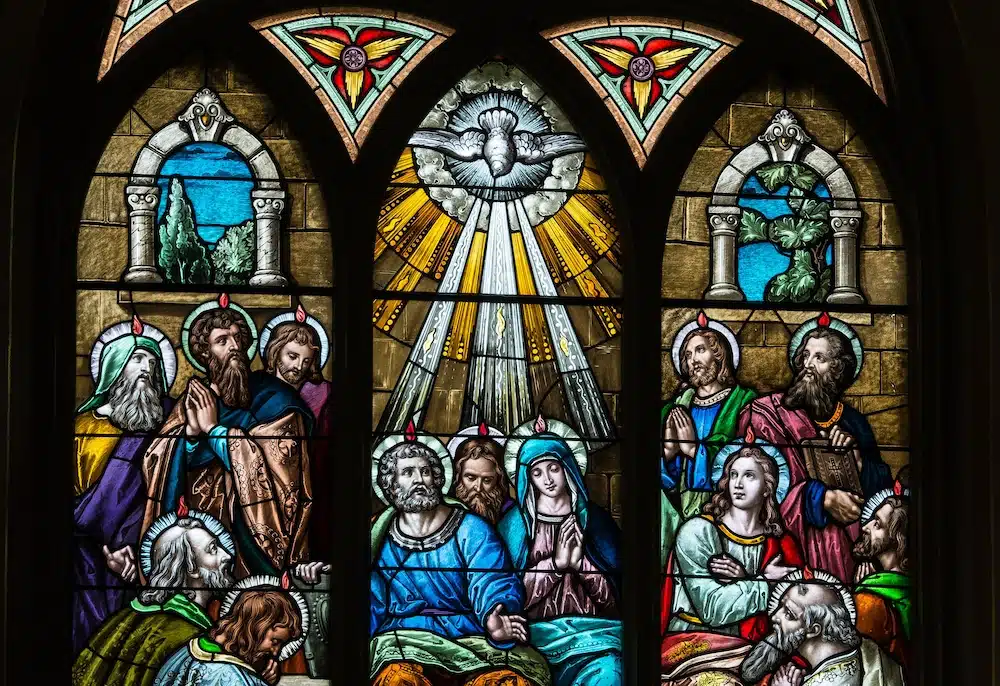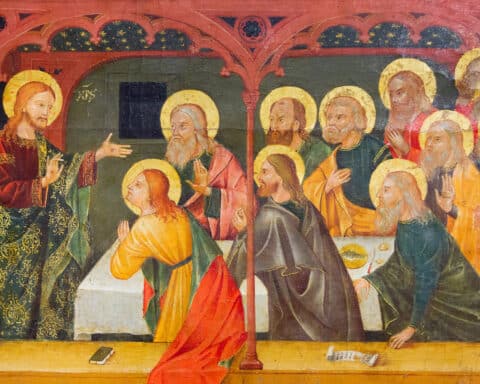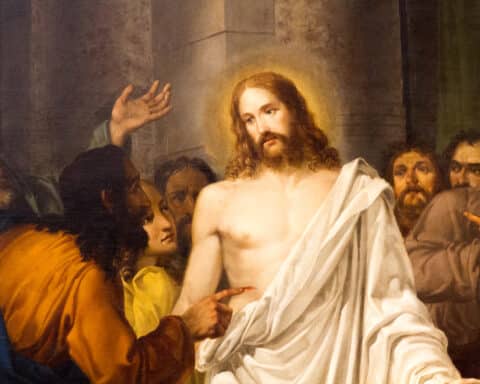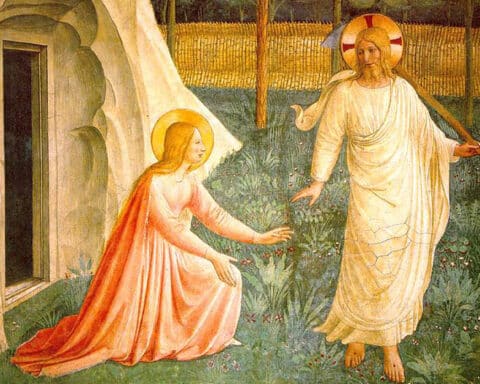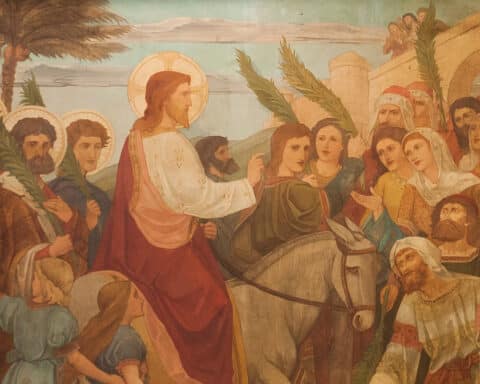Fire and water: These are two scriptural symbols of the Holy Spirit. We hear about them in the readings for Pentecost. In Acts, the apostles recall the “tongues of fire” that rested on the heads of Mary and the apostles at Pentecost. And John’s Gospel reveals the “rivers of living water” that well up in those whose faith thirsts for Christ. Let’s explore these two symbols of the Holy Spirit in search for a better understanding of the Spirit’s presence in the life of the Church.
First, the fire. The Holy Spirit is the Revelator, the One who reveals God to us. In the Old Testament, theophanies were often fiery. Think of the burning bush where Moses first encountered God, the “pillar of fire” that preceeded the Israelites through Egypt’s wilderness, and the “fire in the cloud” that rested above the tabernacle of God’s presence in the Book of Exodus. In each of these instances, the Holy Spirit was at work, revealing the “I am who am,” and drawing us into relationship with him.
In the Gospels, “God’s [same] Spirit, who reveals God, makes Christ known to us” (Catechism of the Catholic Church, No. 687). Thus, the Spirit and the Son are co-missioned. And, as John the Baptist said: “Christ will baptize [us] with the Holy Spirit and with fire” (Catechism, No. 696). Indeed, Christ sent the Holy Spirit to the Church, signified by the “tongues of fire” at Pentecost. Still, today, we come to see and to love God through the revealing power of the Holy Spirit. And we are united with God in the Spirit, who sets our hearts afire with love.
| May 28 – Pentecost Sunday |
|---|
|
Acts 2:1-11 |
The Church’s spiritual tradition witnesses to this Pentecost whenever her saints express their experiences of the Holy Spirit. St. John of the Cross, for example, asked God, “the Living Flame of Love,” to perfect his will with his “tender burn[ing]” (cf. “The Living Flame of Love”). St. Catherine of Siena tells us her soul “caught fire with unspeakable love” as she walked the Way of God’s Truth (cf. “The Dialogue”). And isn’t Mary’s immaculate heart depicted as flaming out with the fire of the Holy Spirit?
Now for the water — an especially striking symbol when juxtaposed with fire. As St. Paul says, “Do not quench the Spirit” (1 Thes 5:19). To the contrary, the symbol of water draws upon our desire — our thirst — for the communion with God gifted in the Holy Spirit’s presence.
This Sunday’s reading cites the “rivers of living water” in John 7. But we encounter these “rivers of living water” again in John 19, the scene of Christ’s crucifixion. Upon Christ’s death, blood and water flow from his side. Here, too, the water symbolizes the Holy Spirit, for “the Spirit is personally the living water welling up from Christ crucified” (Catechism, No. 694). What a striking image!
It is just as striking to encounter this water symbolism in the saints. Catherine of Siena, for example, invites us to “drink” of Christ’s side, to be “inebriated” with truth, understanding, and love (cf. “The Dialogue”). John of the Cross says we “swim in joy” when united to God by the Spirit. “Like fish in the sea,” St. Catherine would add. Finally, some of the earliest depictions of the Annunciation show Mary drawing water from a well or a spring just as Gabriel arrives to announce that she is “full of grace,” “overshadowed” by the Holy Spirit. In this moment Mary is the living image and archetype of the Church at Pentecost. Filled with the Holy Spirit, Mary’s heart flames out, announcing God’s presence amongst us in the co-mission of Christ and the Spirit.
And even today, the Spirit “overshadows” the Church, pouring out the Truth of Love. Thus, the Church “swims in joy,” united to the “unspeakable love” flamed forth at Pentecost. The Holy Spirit is the river and fire of love, revealing the Lord and uniting us with him.

